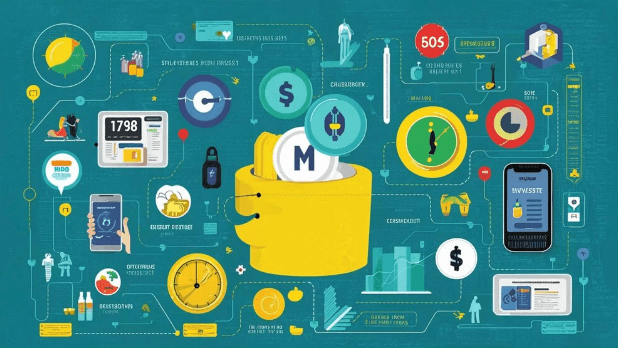Machine Learning in Digital Wallets: Understanding User Behavior to Enhance Usability

The rise of digital wallets has transformed the way individuals and businesses manage transactions and finances. As these digital tools become increasingly integral to our financial lives, enhancing their usability becomes a priority. One of the most effective ways to achieve this is through the application of machine learning (ML). Machine learning can analyze vast amounts of user data to understand behavior patterns and improve the overall experience of digital wallet services. For industries such as futures prop trading, where precision and efficiency are critical, the integration of ML into digital wallets offers significant advantages. This article delves into how machine learning enhances digital wallet usability by understanding user behavior and its implications for futures prop trading.
The Role of Machine Learning in Digital Wallets
Machine learning, a subset of artificial intelligence (AI), involves algorithms that enable computers to learn from and make decisions based on data. In the context of digital wallets, ML algorithms can analyze user interactions, transaction histories, and behavioral patterns to derive insights that drive usability improvements. Key applications include:
- Personalized Recommendations: ML algorithms can analyze spending patterns and preferences to provide personalized recommendations. For example, if a user frequently purchases certain types of goods or services, the digital wallet can suggest relevant offers, discounts, or financial products tailored to their preferences.
- Fraud Detection and Prevention: ML models are trained to recognize patterns that may indicate fraudulent activity. By analyzing transaction data in real-time, these models can identify unusual behaviors and flag potential security threats, thereby enhancing the safety of digital wallet transactions.
- User Behavior Analysis: ML can analyze how users interact with their digital wallets, identifying common behaviors and pain points. This insight allows for the optimization of user interfaces and features, making the digital wallet more intuitive and user-friendly.
- Automated Customer Support: AI-driven chatbots and virtual assistants can handle customer queries and issues more efficiently. ML algorithms enable these systems to understand and respond to user inquiries, improving customer support and overall satisfaction.
Enhancing Usability Through Machine Learning
Machine learning enhances digital wallet usability by making the interaction more intuitive, secure, and tailored to individual needs. Here’s how:
- Streamlined User Experience: ML algorithms can analyze user behavior to identify common obstacles or inefficiencies in the digital wallet interface. By understanding how users navigate the wallet, developers can make data-driven decisions to streamline the user experience, reduce friction, and make essential features more accessible.
- Predictive Analytics: ML models can predict future user behavior based on historical data. For example, if a user frequently makes transactions at specific times of the month, the digital wallet can proactively offer reminders or manage budgeting features to align with these habits.
- Adaptive Interfaces: ML can enable digital wallets to adapt their interfaces based on user behavior. If a user frequently uses particular features, the wallet can prioritize these functions or provide shortcuts, making it easier for users to access their most-used services.
- Personalized Financial Insights: By analyzing transaction data, ML algorithms can offer personalized financial insights and recommendations. For users engaged in futures prop trading, this might include insights into spending patterns, investment recommendations, or alerts about market trends relevant to their trading activities.
Implications for Futures Prop Trading
For futures prop trading, where decision-making and efficiency are crucial, the integration of ML into digital wallets can provide several advantages:
- Enhanced Transaction Efficiency: ML can streamline transaction processes by predicting user needs and automating repetitive tasks. This can be particularly useful for traders who need to execute multiple transactions quickly and efficiently.
- Improved Risk Management: ML algorithms can analyze trading patterns and market data to identify potential risks. By integrating these insights into digital wallets, traders can receive timely alerts and recommendations to manage their risk exposure more effectively.
- Optimized Financial Management: ML can provide futures prop traders with tailored financial insights, helping them to manage their funds more effectively. Personalized recommendations based on trading activity and spending patterns can assist in optimizing their financial strategies.
- Enhanced Security Measures: The advanced fraud detection capabilities of ML can protect traders from unauthorized transactions and potential security breaches. By analyzing transaction patterns and user behavior, ML can identify anomalies and prevent fraudulent activities.
Challenges and Considerations
While the integration of ML offers numerous benefits, there are challenges to consider:
- Data Privacy: Handling sensitive financial data requires stringent privacy measures. Service providers must ensure that ML algorithms comply with privacy regulations and protect user information.
- Algorithmic Bias: ML models can inherit biases present in the training data. Ensuring that algorithms are trained on diverse and representative datasets is crucial to avoid biased outcomes and ensure fairness.
- Technical Complexity: Implementing and managing ML algorithms can be complex and resource-intensive. Service providers must invest in the necessary infrastructure and expertise to effectively leverage ML in digital wallets.
Read also: Beyond the Buffet: Modern Trends in Corporate Catering
Conclusion
Machine learning is a powerful tool for enhancing the usability of digital wallets by understanding and responding to user behavior. By integrating ML, digital wallets can offer personalized recommendations, streamline user experiences, and improve security. For futures prop trading, this means more efficient transactions, better risk management, and optimized financial strategies. As digital wallet technology continues to evolve, the role of machine learning in driving usability and innovation will become increasingly significant, helping users and traders alike achieve their financial goals with greater ease and confidence.





